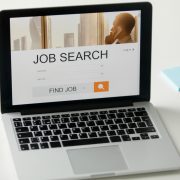One-in-six Aussies Has Multiple Jobs
More than one-in-six Australian workers is holding down more than one job.
The number of people who had a job during 2015-16 was 13.3 million, according to figures released by the Australian Bureau of Statistics on Wednesday.
But 15 per cent of those workers had more than one job at the same time in the year, pushing the total number of jobs held to 18.5 million.
Those with multiple jobs earnt less on average than those with one role, with a median total income of $39,813, compared to $48,028 for those who worked a single job.
ABS labour statistics program manager Bjorn Jarvis says the nature of working multiple jobs likely played a role in that difference.
“If people are working very short duration jobs, or they’re starting a business and juggling other work, they might be doing a few small things that they don’t actually add to a very large aggregate,” he told AAP.
Those working multiple jobs were most likely to be working their first job in the healthcare and social assistance sector or the administrative and support services industry.
The insights are part of a new data set from the ABS, combining its own statistics with data from other agencies, including the tax office.
The figures have for the first time shed light on the makeup of workforces in local areas around Australia.
Melbourne’s southeast is where you would be most likely to find an Australian manufacturing worker.
Dandenong had the most manufacturing workers in 2015-16 at 3000, followed by Hampton Park with 2800 and Keysborough with 2600.
The most mining workers could be found in Queensland’s Mount Isa (2900), while the highest number of construction jobs could be found in Perth (3100) and nearby semi-rural Baldivis (3200).
Sydney’s Haymarket and The Rocks had the highest number of jobs in the national overall, with 48,600 workers.
The area also had the nation’s most workers in accommodation and food services (11,600) , administrative and support services (8400) and retail trade (2800).
The ABS’ survey of employee earnings and hours is still the most accurate measure of incomes, Mr Jarvis noted, as tax data used in the latest release doesn’t account for the number of hours worked.
But the gender pay gap remains clear in the new information.
The median income for a person per job was $54,999 for males and $39,356 for females in 2015-16.
Article source here.



